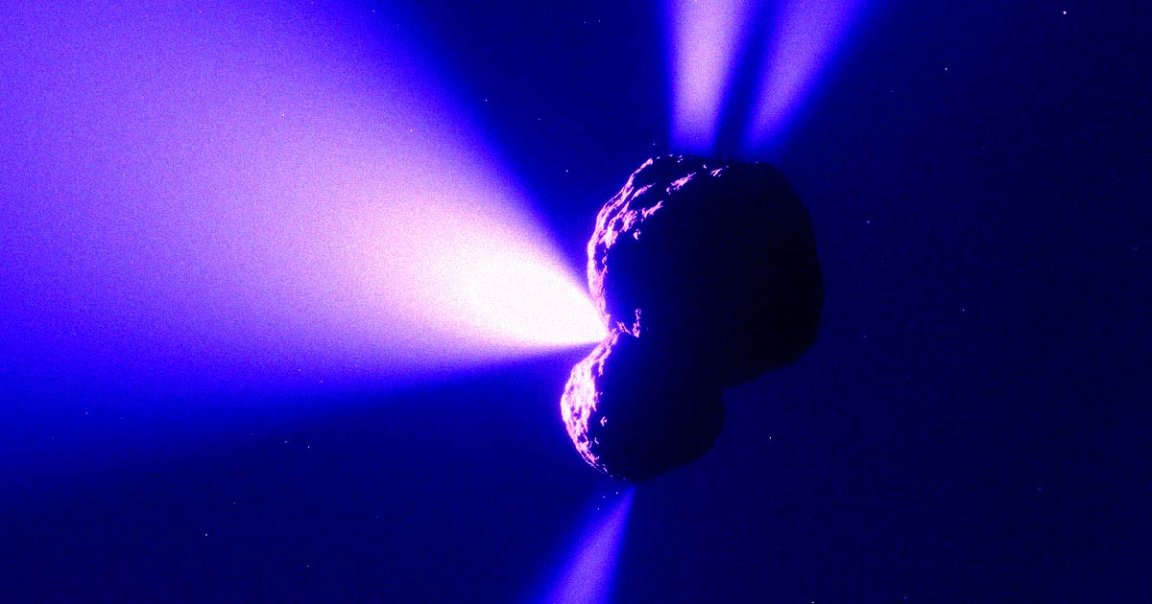
Flatulent Farer
NASA scientists using the James Webb Space Telescope have spotted a strange, distant object in our solar system that’s repeatedly shooting out jets of gas.
Caught between the orbits of Neptune and Jupiter, the icy, outgassing body is a type of object known as a centaur.
Centaurs are somewhere between a comet and an asteroid — and thanks to the James Webb’s spectral data, we’re learning more about what’s behind their unusual characteristics.
As detailed in a new study published in the journal Nature, the object dubbed Centaur 29P has two jets of carbon dioxide that have never been seen before, as well as a jet of carbon monoxide.
Astronomers had previously observed another CO jet on Centaur 29, but this is the first time they’ve confirmed the presence of CO2. Based on a 3D model of the jets, the researchers believe the centaur was formed from a mash of several objects with different compositions — a potential insight into how stuff formed in the early history of the solar system.
“It challenges our ideas about how primordial objects are created and stored in the Kuiper Belt,” study coauthor Geronimo Villanueva at NASA’s Goddard Space Flight Center said in a statement about the work.
On the Cent
Centaurs share traits with both asteroids and comets: they can look like the former, but are mainly composed of ice like the latter.
They are also in orbital limbo. Astronomers believe that centaurs were once trans-Neptunian objects that were pulled from the outer Kuiper Belt, a region of icy bodies that encircles our Solar System and is home to Pluto, into the interior by the gravity of giant planets, where they begin to resemble the orbit of comets.
“Centaurs can be considered as some of the leftovers of our planetary system’s formation. Because they are stored at very cold temperatures, they preserve information about volatiles in the early stages of the solar system,” said NASA Goddard scientist and lead author Sara Faggi in the statement.
“Webb really opened the door to a resolution and sensitivity that was impressive to us — when we saw the data for the first time, we were excited. We had never seen anything like this.”
Smells Fishy
These latest findings are intriguing, but more work will be needed to explain the most puzzling part of the centaur’s behavior: why it’s spewing gas.
Comets, their close cousins, do the same thing — they outgas water, which is how they get their distinct glow. As they near the Sun, hot temperatures cause their ice to instantly turn into a gas.
But centaurs reside in the frigid outskirts of the Solar System — so heat, at least not from the Sun, can’t be the cause.
“I’d like to go back and look at Centaur 29P over a much longer period of time,” coauthor Adam Mackay, an astronomer at Appalachian State University, said in the statement. “Looking at these jets over time would give us much better insights into what is driving these outbursts.”
More on space: Astronomers Spot Mysterious Planet Orbiting the Closest Single Star